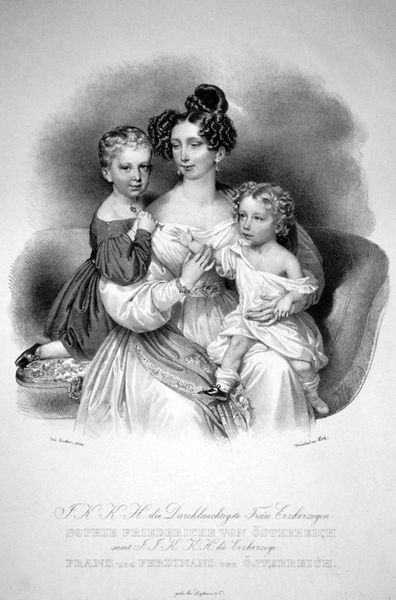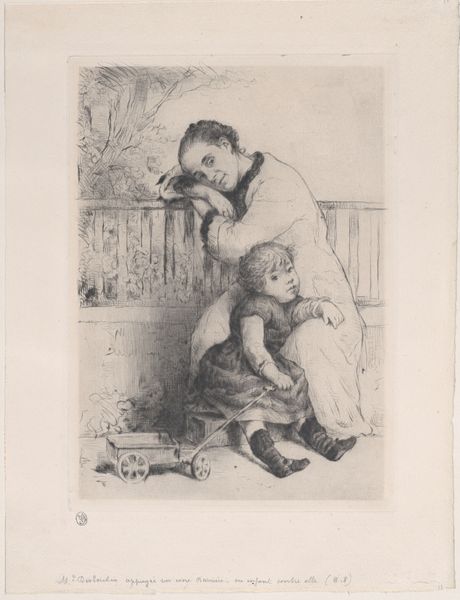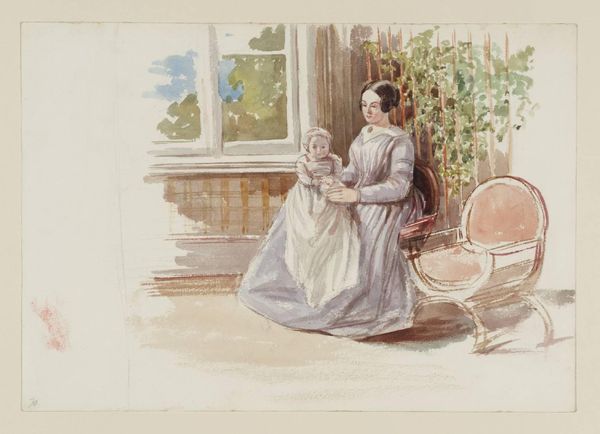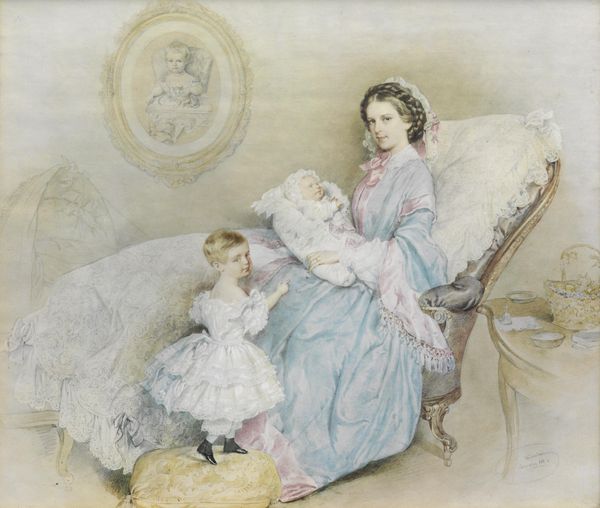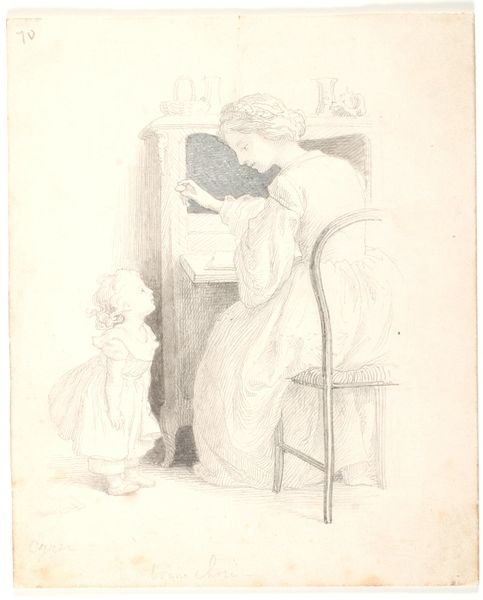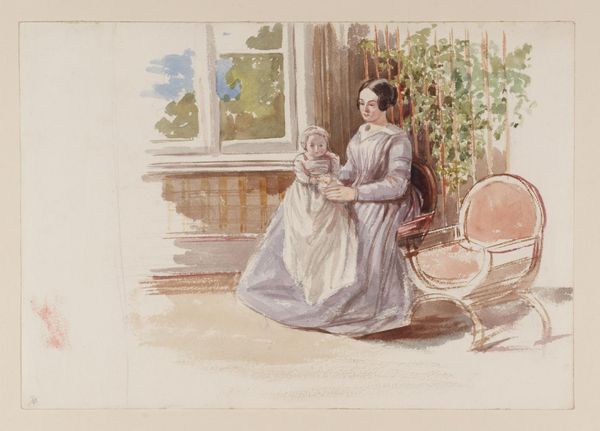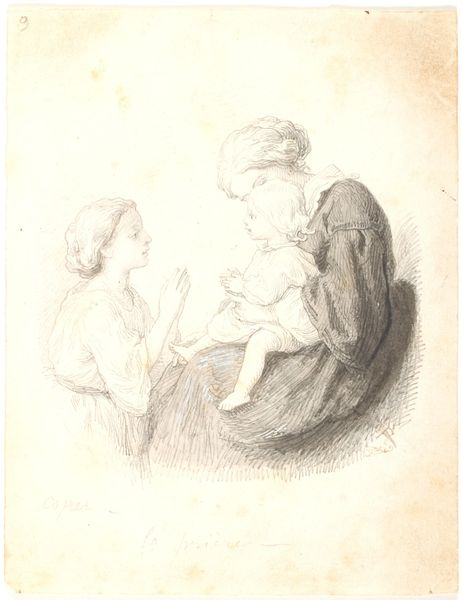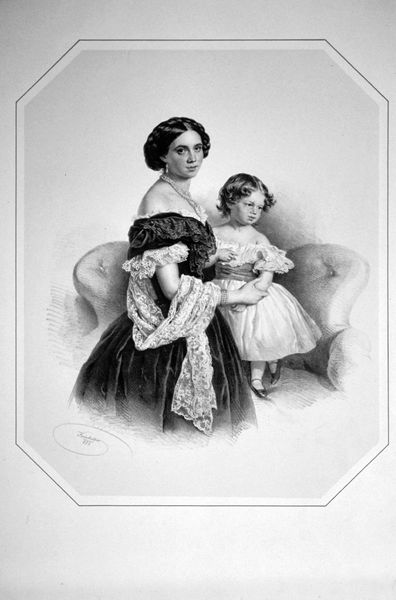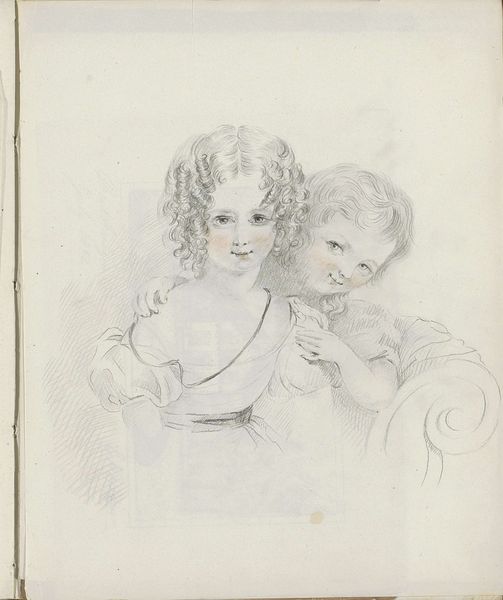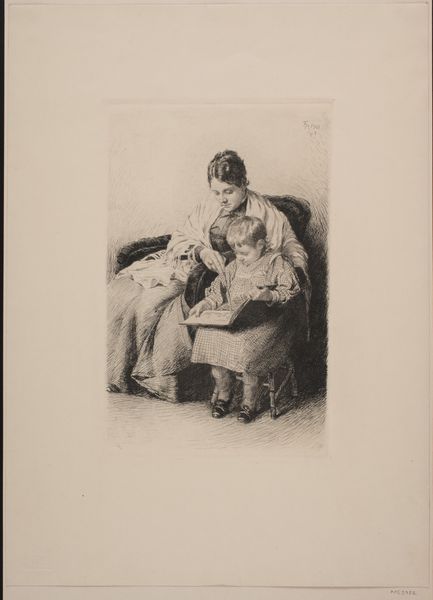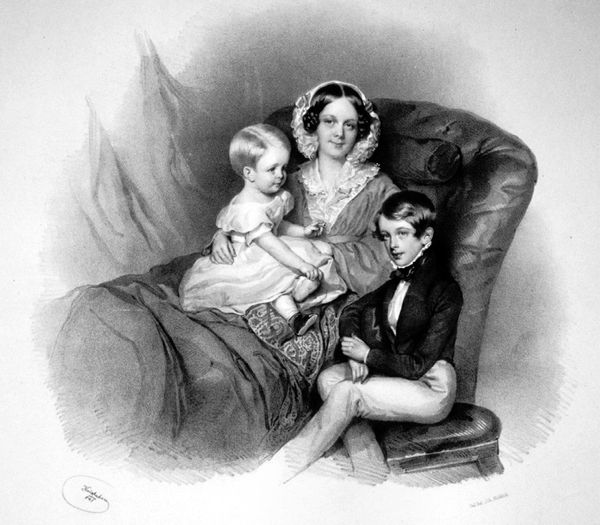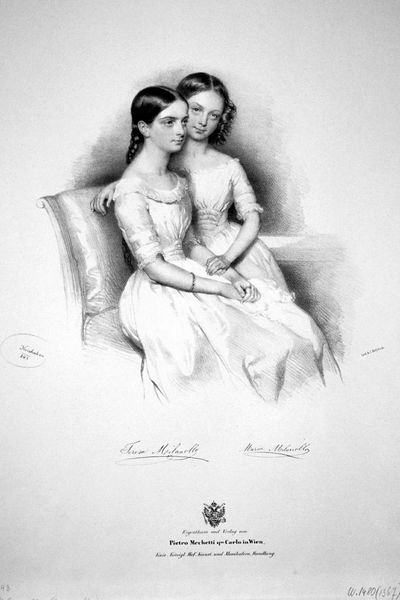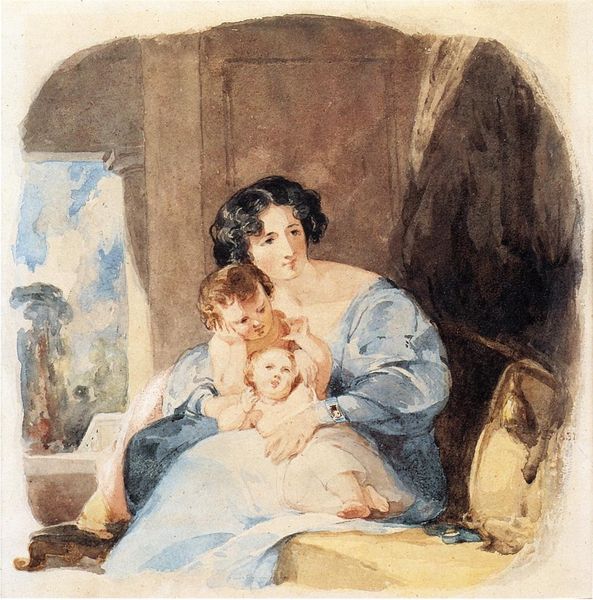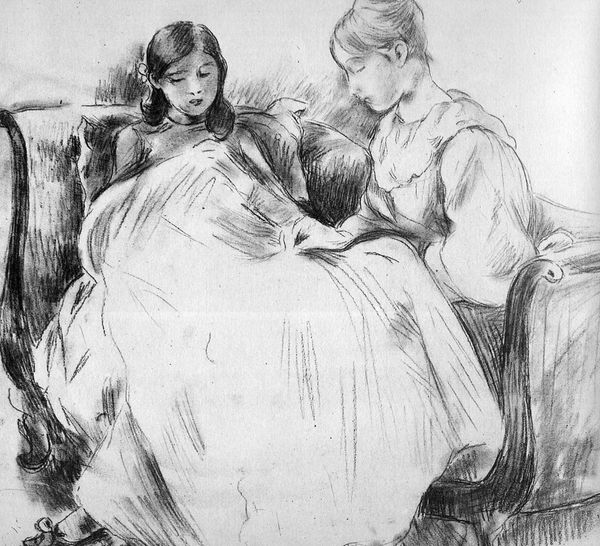
drawing, graphite
#
portrait
#
drawing
#
charcoal drawing
#
romanticism
#
graphite
#
graphite
#
realism
Copyright: Public domain
Curator: What a striking and tender image! We are looking at Josef Kriehuber's graphite and charcoal drawing of Antonie Countess Batthyany and her child, dating from 1849. Editor: There’s an almost ethereal quality to it. The rendering feels incredibly delicate, yet grounded in the soft texture achieved by the artist. Curator: Kriehuber was known for his lithographs, particularly portraits of prominent figures. It’s interesting to consider how these images circulated and reinforced social hierarchies. Lithography democratized portraiture, yet its subjects remained largely within the aristocracy. Editor: Indeed. Let's focus for a moment on the material process. The application of graphite, layered with charcoal, creates a fascinating textural contrast—a sort of industrial romanticism where mechanical reproduction allows for wider consumption. We see here a Countess, not just as nobility, but as a product distributed, and to a point, made common. The paper support becomes vital, doesn’t it? Its fiber and processing affect the receptivity of these layers, directly influencing the artwork's outcome and ultimately shaping its perceived value. Curator: Absolutely. And considering the political upheavals of 1848-49, the year this drawing was created, it invites us to think about how portraiture served as a tool to preserve and project power during times of change. Batthyany’s husband was executed in 1849 for his role in the Hungarian Revolution. Viewing it in light of such violent events makes the image even more evocative and melancholic. One wonders how these artworks were perceived and received amidst this landscape. Editor: That is true, especially the detail on her gown, rendered to have that lovely softness—yet even then, the cost of materials, dyes and textiles, the labour behind them, suggests how removed such intimate portraiture was from the public during turbulent years. Curator: It's powerful how exploring both the intimate and the historical allows for a richer interpretation of this work. Editor: A perspective which leads us to reflect on the cultural and economic implications inherent to its production, inviting the public to view historical art with a modern lens.
Comments
No comments
Be the first to comment and join the conversation on the ultimate creative platform.
